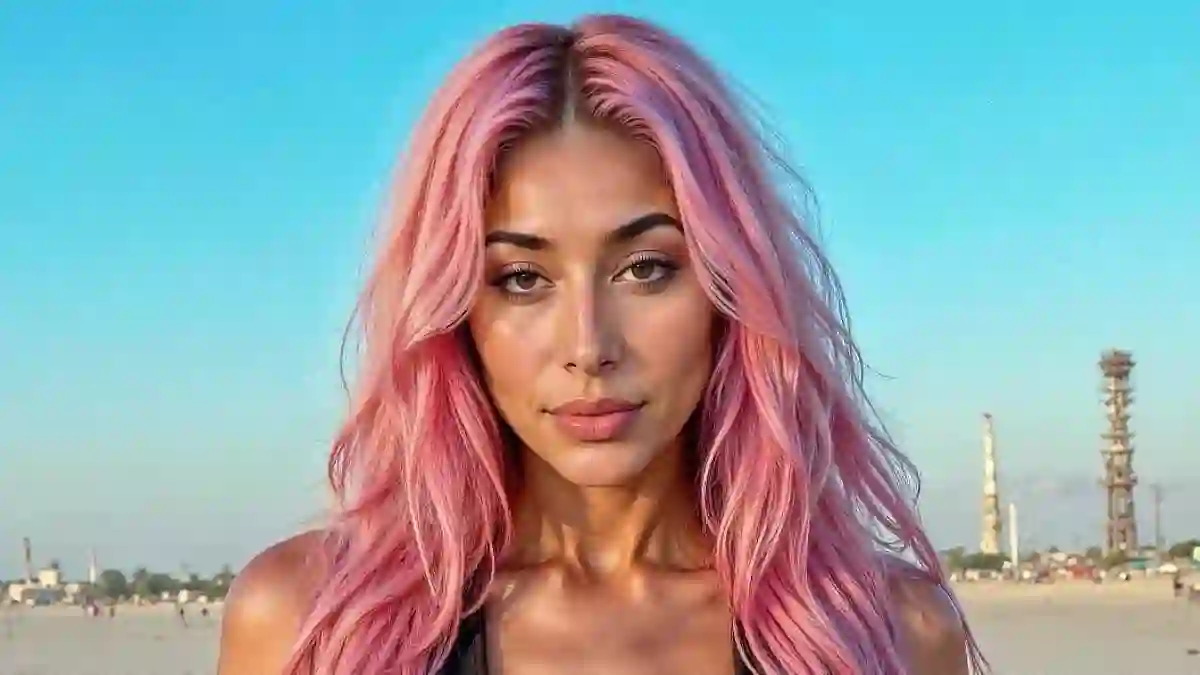Scrolling through social media, it’s easy to be fooled.
One moment, you’re admiring a concert snapshot, and the next, you realize the smiling figure in the frame doesn’t exist.
That was the case for Aitana Lopez, whose Instagram post claimed she was enjoying an Oasis gig at Wembley.
Arms outstretched, pink hair cascading over her shoulders, she looked effortlessly carefree.
But here’s the catch: Aitana isn’t real.
Enter the AI Influencers
Aitana is part of a growing wave of AI influencers—digital personas crafted to perfection.
Alongside her, figures like Mia Zelu, the blonde, blue-eyed “girl next door” who quotes Bible verses and apparently shows up at Wimbledon, have started infiltrating our feeds.
They are everywhere and nowhere, capable of doing anything, looking flawless, and drawing comments from fans who often don’t realize they’re not real.
The creators behind these virtual celebrities are thrilled—they make money from the content.
Psychologists and experts, however, warn of potential psychological fallout as these idealized figures warp perceptions of beauty and normalcy.
The Science of Perfection
Charlotte Fox Weber, psychotherapist and author, explains: “AI influencers like Aitana and Mia Zelu aren’t just attractive—they’re algorithmically perfected.
Hyper-symmetry, fantasy proportions, no pores, no limits.” Constant exposure to these avatars can subtly shift our idea of what’s “normal,” affecting self-esteem and even how people perceive their partners.
Hannah O’Donoghue Hobbs, founder of January 92 Socials, adds that AI models showcase a level of perfection that literally doesn’t exist.
“It’s an impossible standard, and it’s being marketed as aspirational,” she says.
The Birth of a Digital Star
Aitana was created by Spanish agency The Clueless.
Ruben Cruz, co-founder, says he made her after tiring of working with real influencers, whose egos and demands he found frustrating.
Together with Diana Nunez, he produced a woman who could pose however the agency wanted, without the fuss—or paychecks.
Fitness models? Aitana needs no gym time, just a well-crafted prompt.
Dr Carolina Are, a social media researcher, calls this approach “appalling.”
She warns that replacing humans with AI influencers risks sidelining creative professionals while offering brands a cheap, risk-free aesthetic.
Monetizing the Unreal
Aitana reportedly earns her creators £8,000 a month via advertising deals and subscriptions on Fanvue, a platform similar to OnlyFans but allowing AI-generated adult content.
Fans pay to receive messages and videos of her, such as her “gaming sessions,” where she stares blankly at the camera while Mario Kart plays on-screen.
The Clueless has expanded its portfolio with other AI models, including Lia Byte, Kai Toledo, and Olivia Roa—all seemingly perfect and heavily sexualized.
The majority of Aitana’s fanbase, unsurprisingly, is male.
Psychological Risks
Experts warn repeated exposure to these avatars can damage self-image, particularly for young women.
Fox Weber notes that parasocial attachment—one-sided relationships with public figures—can make human partners feel messy and complicated by comparison.
O’Donoghue Hobbs adds that adult content monetization blurs fantasy and reality, fostering unrealistic expectations in both men and women.
Ethical and Industry Concerns
Beyond mental health, AI influencers threaten the creative workforce.
Photographers, makeup artists, stylists, and models may be sidelined as agencies like The Clueless or Seraphinne Vallora produce perfect AI images at a fraction of the cost.
Critics argue this is “industrialized objectification,” particularly since most AI influencers are female, reducing women to tradable commodities.
The agencies defend their work, claiming AI is meant to supplement creativity, not replace humans. hey also assert some diversity in body types, though the most popular AI influencers still adhere to the “perfect” aesthetic.
The Question of Authenticity
Aitana’s posts, like her supposed Oasis gig, garner thousands of likes, many from other AI accounts.
But when shared on real fan pages, the response is often skeptical or negative. Concerns arise around transparency, with some posts not clearly marked as paid partnerships—a potential breach of UK advertising guidelines.
Hobbs emphasizes: audiences deserve to know if they’re interacting with a human or a digital creation.
Without disclosure, trust erodes—not only in the influencer but also in the brands behind them.
A Future Filled With Illusions
Some agencies claim AI influencers can improve social media by offering honesty about their artificiality.
Yet experts caution that these avatars are shaping unrealistic beauty standards and contributing to the “ensh**ification” of the internet, where more and more content is manufactured perfection rather than lived experience.
At the end of the day, Aitana and her digital peers are a reminder of how far online fantasy has come—and how little it has to do with reality.
The real question remains: if it isn’t real, and it exists only to make money, what’s the point?



